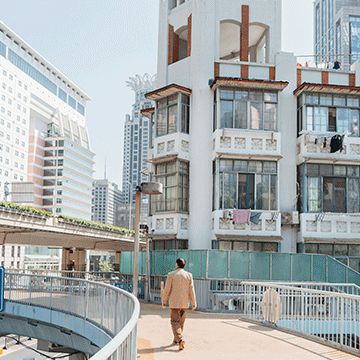Download Assets
description
Explore the power of Color Grading in Photoshop! This tutorial will teach you to non-destructively enhance your images using the Camera Raw filter. Discover how to adjust shadows, midtones, and highlights to set the perfect tone and give your photographs a professional, compelling look.
Follow along with all 30 episodes as we explore the the magic of Photoshop together!
Watch Next
JOIN 30 DAYS OF PHOTOSHOP (FOR FREE!)
Ready to jump in? Sign up and we’ll email you a printable calendar and daily class schedule so you can get started right away!
Image Source
- Tony Frost
- Micah & Sammie Chaffin
Images sourced from Unsplash.
Share
AFTER
BEFORE
Get the Cinematic Look
Color grading is a powerful way to transform the mood and tone of any image. In this guide, you’ll learn a simple yet effective technique using Photoshop’s Camera Raw filter, ensuring you can enhance your photos with stunning color and a unique feel.
Prep Your Photo
Before you begin, prepare your image for non-destructive editing.
1. First, right-click on your background layer in the Layers Panel and select “Convert to Smart Object.” This crucial step allows you to edit and re-edit your settings at any time without permanently altering the original image.
2. Once converted, go to the Filter menu and select Camera Raw Filter. This will open a new window where all your color grading work will be done.
Adjust Your Tones
3. Inside the Camera Raw window, navigate to the Color Grading panel. Here, you’ll find three color wheels to adjust your Shadows, Midtones, and Highlights.
4. Start with the Midtones and use the color wheel to select a hue and saturation that complements your photo’s mood. Adjust the Luminance slider to make the midtones lighter or darker.
5. Repeat this process for the Shadows and Highlights, experimenting with different colors to create a cohesive look. A common artistic choice is to use a cool color (like blue) for shadows and a warm color (like orange or green) for highlights. Use the Blending and Balance sliders at the bottom of the panel to fine-tune how these color adjustments interact with each other in your image.
Final Touches
6. After you’ve finished adjusting your colors, hit OK. The Camera Raw filter will appear as a Smart Filter on your layer. This allows you to easily toggle the effect on and off by clicking the eye icon next to it.
7. If you want to make the effect more subtle, double-click the small icon to the right of “Camera Raw Filter” to open the Blending Options. Here, you can adjust the Opacity of the entire filter, giving you complete control over the intensity of your color grade.
That’s a wrap on today’s episode! Be sure to come back tomorrow for our next tutorial, where we’ll show you how to correct exposure and create the perfect base for all your photo edits.












